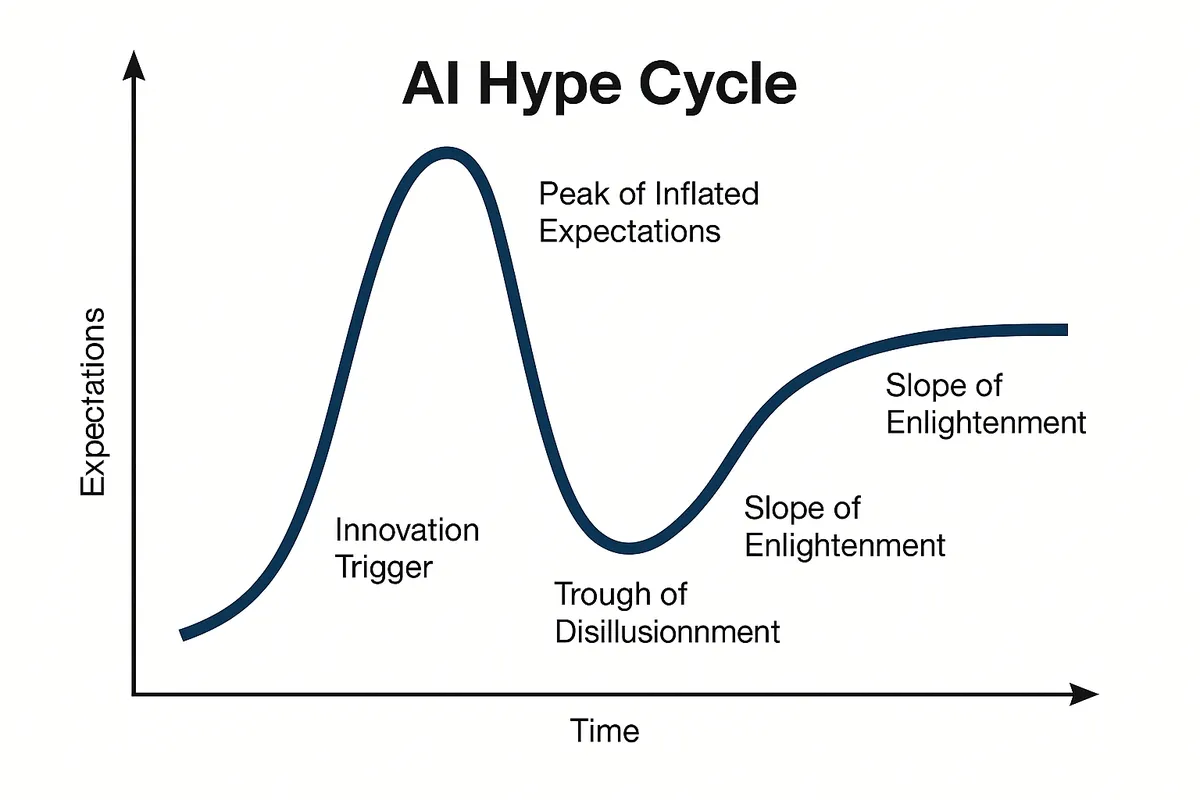Where Are We in the AI Bubble?

Like any rapidly evolving technology, AI is drawing scrutiny over whether it's being overhyped (or rather how much is it being overhyped). Its swift advancement and widespread adoption are accompanied by concerns that key players may be overstating its promise or exaggerating its actual influence. Are current AI investments disproportionately large compared to its real value? A lot of parallels can be drawn between previous bubbles - take for instance the dot com bubble and the AI bubble now. Disregarding the technology (I believe both the internet and AI are a major milestones in the information age - as much as the printing press was a revolution in information dissemination) - we can see a clear disconnect between AI companies' valuation and their combined revenues (not unlike during the dot com bubble).
💡 How deep are we into the AI bubble?
In a 2024 piece titled AI’s $600B Question, venture capital giant Sequoia highlighted that major hyperscalers — AWS, Azure, and Google Cloud — are pouring billions into AI, yet there appears to be a $600 billion revenue gap to justify such spending. Meanwhile, Wall Street skeptics are drawing comparisons between today’s AI surge and previous bubbles, like the dot-com era, the early 2000s fiber expansion, and even the 19th-century railroad boom.
However, unlike the early-2000s fiber rollout, which was based on anticipated demand, companies today are snapping up Nvidia GPUs to power applications that are already functional but not having wide user adoption (the latter is the key here).
What’s needed now is a better grasp of why this isn't simply a massive infrastructure project with long-term returns. The "telecom bubble" saw vast investments in fiber-optic networks, driven by lofty expectations for internet usage. But growth lagged behind projections, leading to excess capacity and financial strain for telecom providers.
Beyond economics, we’re witnessing a deeper transformation. AI may fundamentally shift one of capitalism’s core engines—turning labor into a scalable, predictable resource—by automating tasks and stabilizing their future costs. Another major development is the ability to process and analyze textual data, which has long resisted automation, unlike application or analog data.
We’re also moving toward AI-powered access to information across the Internet. This transition will demand enormous capital and place unprecedented pressure on physical resources such as energy and water. Nuclear energy, in particular, is emerging as a favored option—just search “Kemmerer, Wyo. Bill Gates” for context.
This isn’t merely an AI bubble—it signals the vast promise of automated labor. The hyperscalers understand this well, as evidenced by their bold, multi-billion-dollar investments in the space.